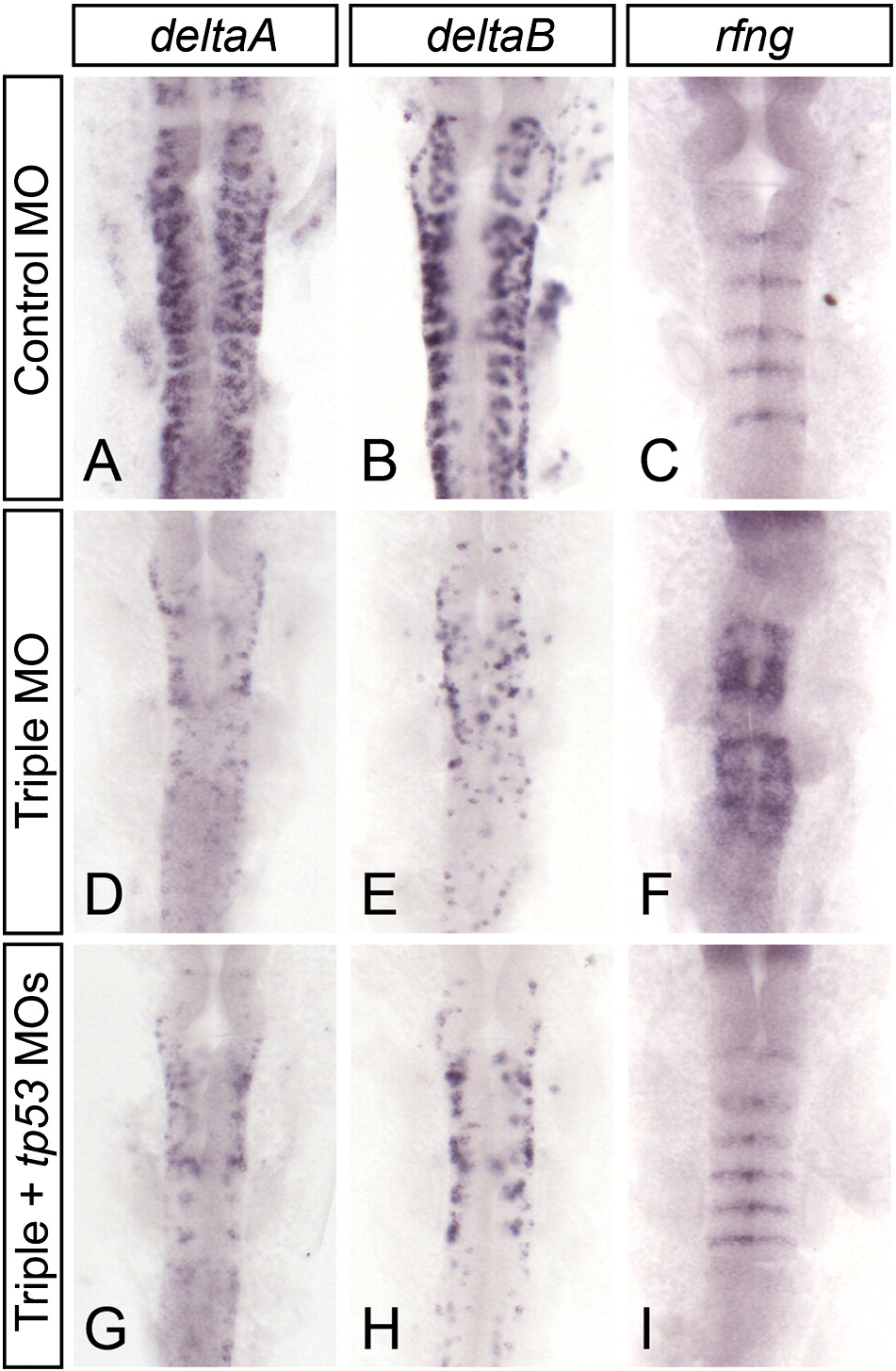Fig. 3 Proneural genes are not required to restrict boundary marker expression to rhombomere interfaces. Embryos injected with control (A–C), neurog1 + ascl1a + ascl1b (triple, D–F) or triple + tp53 (G–I) morpholinos were hybridized with RNA probes to deltaA (A, D, G), deltaB (B, E, H), and rfng (C, F, I). Effective proneural gene knockdown is inferred from the decrease in downstream genes deltaA and deltaB in triple MO-injected embryos (compare A and B with G and H). Boundary marker rfng expression does not expand to non-boundary regions in the absence of proneural genes when cell death is blocked (compare C and I). The expansion of rfng expression in triple proneural gene knockdown alone (compare C and F) is therefore dependent on Tp53 activity and/or apoptosis (compare F and I).
Reprinted from Developmental Biology, 350(2), Gerety, S.S., and Wilkinson, D.G., Morpholino artifacts provide pitfalls and reveal a novel role for pro-apoptotic genes in hindbrain boundary development, 279-289, Copyright (2011) with permission from Elsevier. Full text @ Dev. Biol.

